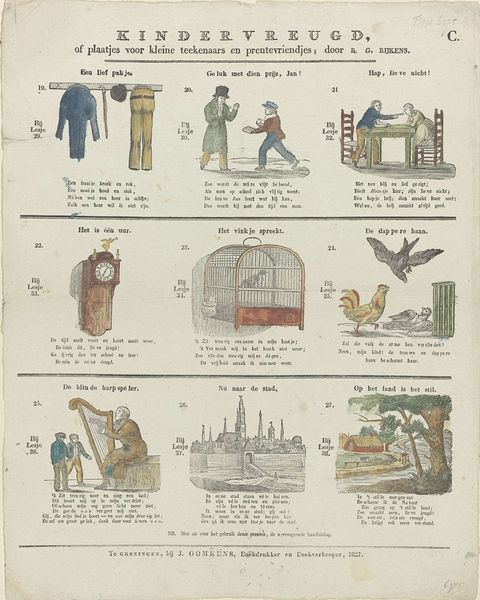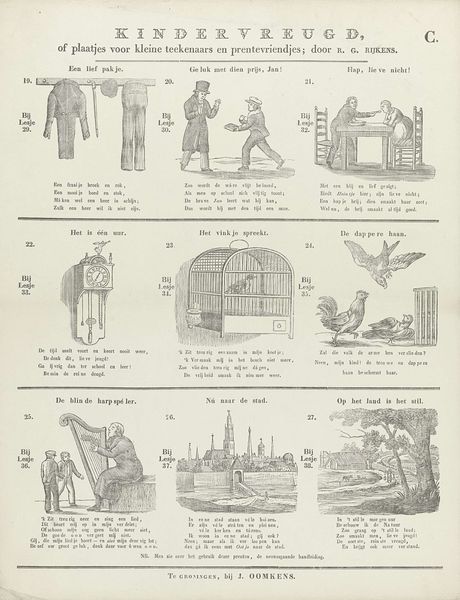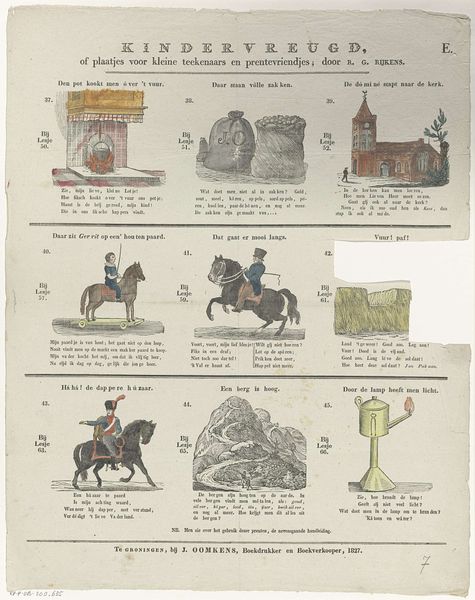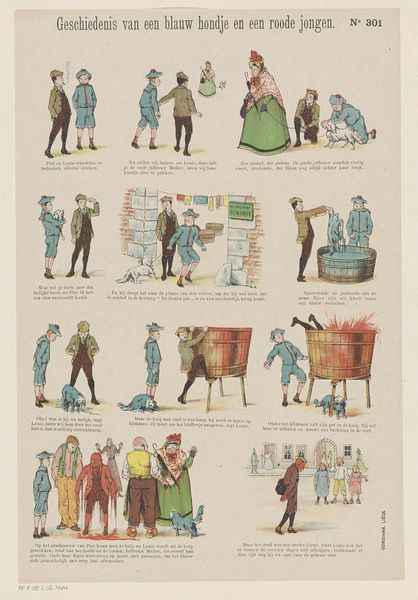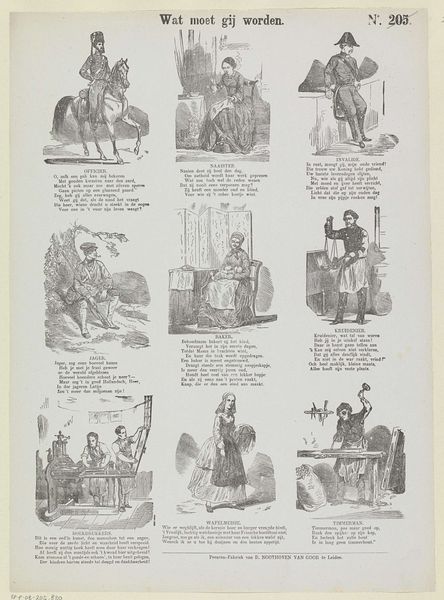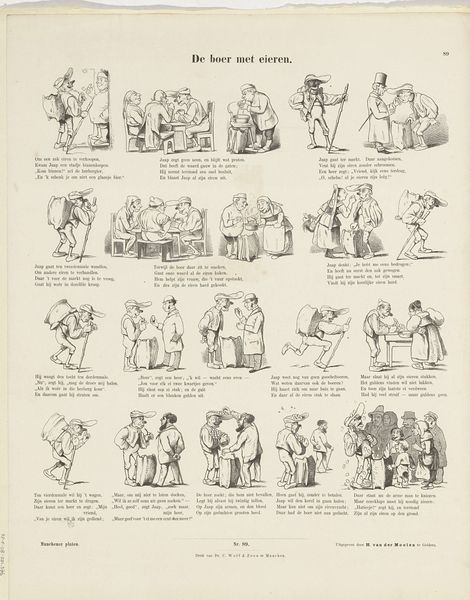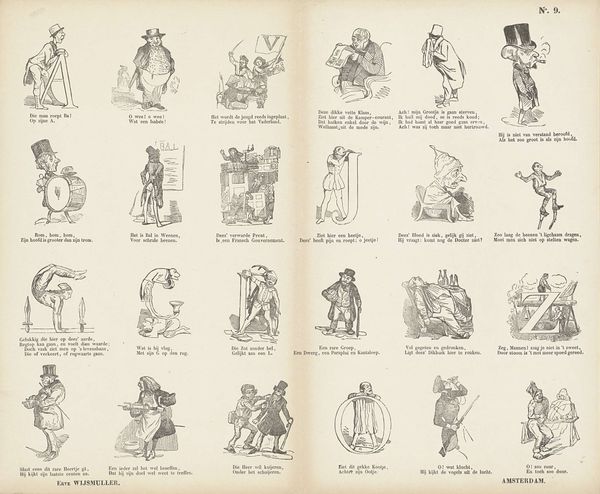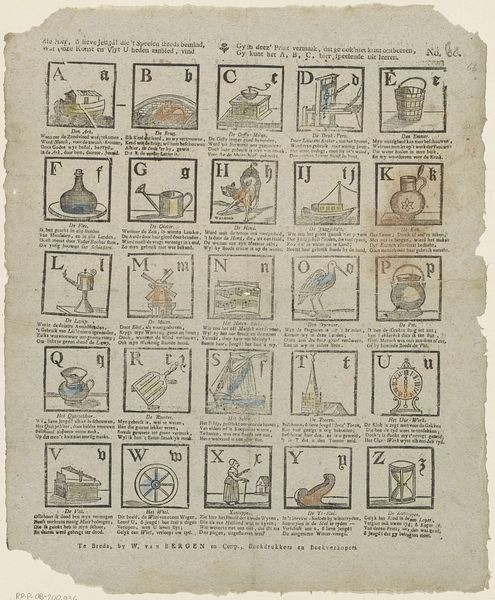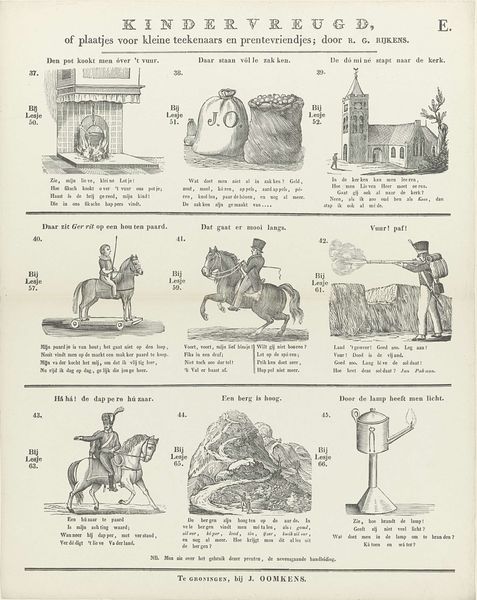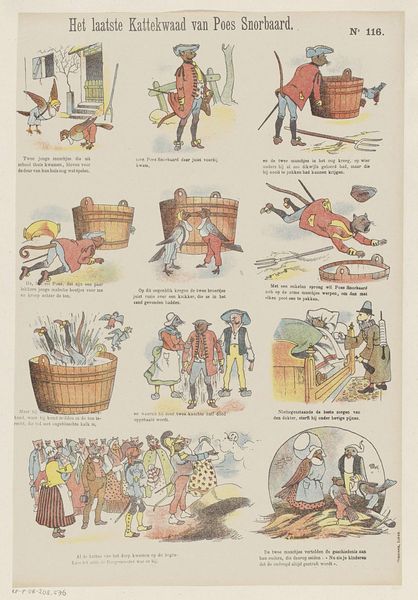
Kindervreugd / of plaatjes voor kleine teekenaars en prentevriendjes; door R. G. Rijkens 1827
0:00
0:00
janoomkens
Rijksmuseum
print, engraving
# print
#
romanticism
#
genre-painting
#
northern-renaissance
#
engraving
Dimensions: height 424 mm, width 337 mm
Copyright: Rijks Museum: Open Domain
Curator: Ah, this is "Kindervreugd / of plaatjes voor kleine teekenaars en prentevriendjes; door R. G. Rijkens," a print made in 1827. It's currently part of the Rijksmuseum's collection. What's your initial impression? Editor: Well, it immediately strikes me as visually busy, like a page from a child's primer. The small scenes are charming, almost like little windows into different worlds, though the layout feels somewhat scattered. Curator: It’s interesting you say that, as the scattered effect stems from the work being both decorative and didactic. In the social context of early 19th century Dutch childhood education, works like this were designed to subtly instruct young children about their culture and moral values. Editor: Yes, looking closer, I see each vignette has a numbered "Lesje" beside it, implying lessons to be learned from the depiction, like with the drawing of an old water pump, or of a seated king of the Netherlands.. The romantic style gives a pleasant feel to its moral instruction. Tell me, structurally, do you read it a particular way, despite the overall fragmented impact? Curator: Formally speaking, I find that its charm rests in its eclecticism. Though at first blush it appears simple, note the skillful engravings of different scenes each having their own character, like the industrious spider in its web, and the ox giving milk. I find a coherence emerges between them once the intent behind them—entertainment paired with instruction—reveals itself. Editor: Indeed. Its varied texture reminds us how printed works offered affordable art, disseminating particular notions of class, work, and beauty among an expanding, aspirational middle class. Each image likely provided prompts for fireside discussions with family, as much to enjoy and admire as to "learn." Curator: That makes me think about the way such an aesthetic of variety served political and cultural purposes. By visually connecting genre paintings and the images themselves, the author and editor promoted civic values through art, turning images into elements of character building. Editor: Ultimately, I view it as a document about societal expectations made accessible through popular imagery of the era. "Kindervreugd"—children's joy— becomes a conduit for communicating and maintaining shared Dutch values of education and leisure. Curator: Yes, I now recognize the work's strength is due to this connection of form and public consumption; how these intimate pictures play into the construction of values.
Comments
No comments
Be the first to comment and join the conversation on the ultimate creative platform.

